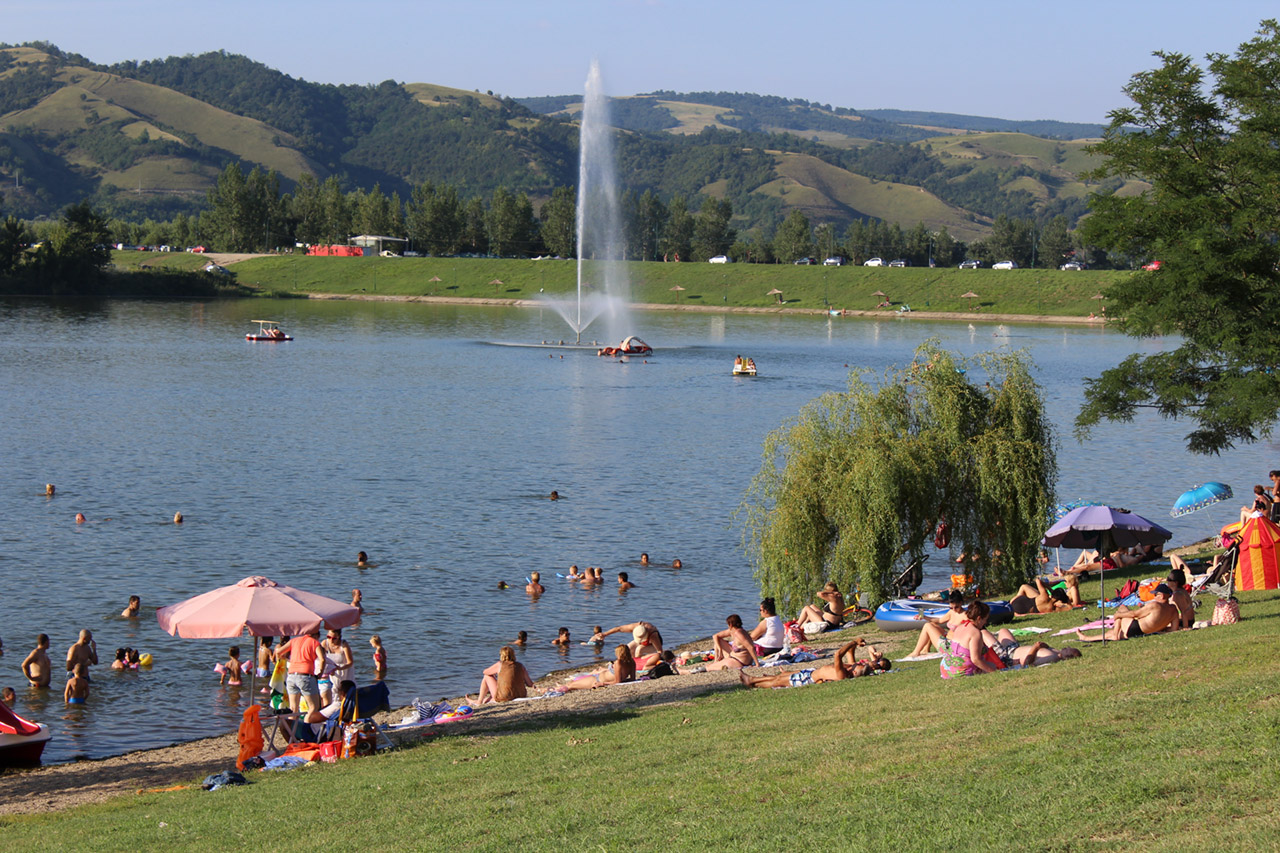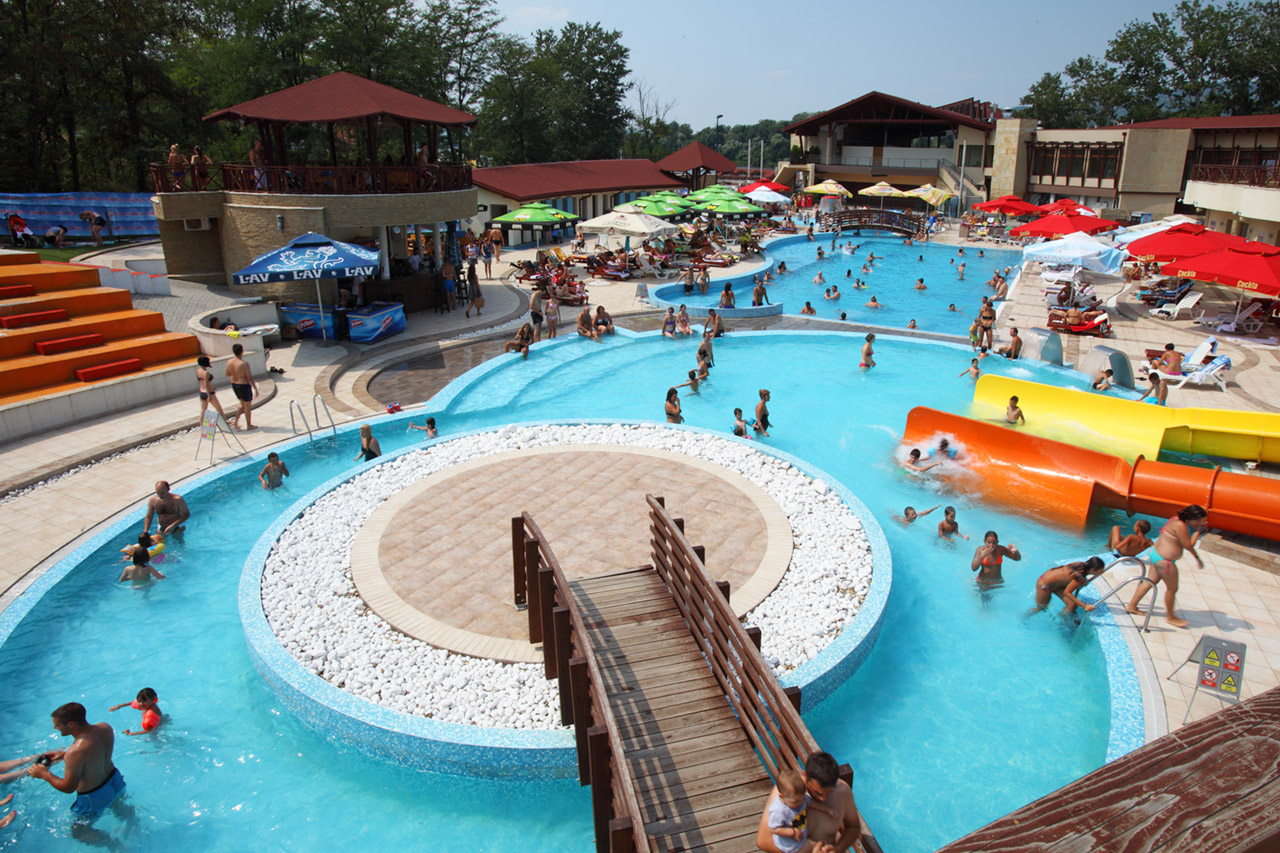
In the foothills of the Carpathian and Homolje Mountains at the confluence of the blue Danube and the gold-bearing Pek, lies Veliko Gradiste. It is, above all, a beautiful little town with wide streets, and multitude of flower gardens, always green lawns and nicely arranged terraces. With its beautiful Danube quay and the old bazaar, it is a feast for the eyes and a balm for the soul, and the Silver Lake with its wood of white acacias is a health factory. At a distance of 114 km from Belgrade, Veliko Gradiste lies on the Iron Gate Road, and as Veliko Gradiste’s territory starts in Ram, this area is called the entrance to the Djerdap gorge.
Go everywhere, continue, and come to Gradiste
The legend says that a long time ago a cart loaded with various goods arrived in town. Asked whether he really had to come everyday, the trader laconically answered “I have to, this a big town requires (“veliki grad iste”). That’s how the town got its name. It has a nice entrance, clean streets, an old bazaar preserved from Turkish times, a well stocked market, a beautiful spacious square, a centennial park with monuments to the soldiers of World Wars I and II and a monument to Vlastimir Pavlovic Carevic, a beautiful paved esplanade from the town to the Silver Lake, beaches on the Danube and the Pek. The beautiful town center – Zitni Trg (Grain Square) with the district office (municipal building), the library which harbors a permanent exhibition of sculptures by Milan Besarabic, and the high school. And above all a rich cultural and entertainment life from May until September.
Here the Danube with silver called Silver Lake – our sea
Two km from Veliko Gradiste, near the White Acacias wood (Beli Bagrem), where the Danube meanders, is the Silver Lake (Srebrno Jezero). It was created by damming an arm of the Danube as a protection from underground water. So was created a 14 km long lake, one of our largest lakes.
The reflection of the water and the shimmer like silver gave the lake its name. Nice, warm summers and pure water which is filtered through the sandy soil, with beautiful pebbly, grassy and paved beaches make it very attractive.
Good infrastructure, rich menus and other offers of the Silver Lake Resort, bars, golf and tennis courts, trips on beautiful tourist boats, luxury hotel accommodation with conference rooms, comfortable lodgings in villas on the very shore of the lake, pleasant lodgings with the owner in a homely atmosphere, a recreation area, a camping.
In addition must be noted that the lake is rich in fish, and that it is rightfully called a paradise for anglers. Here a carp of 45 kg was caught, which broke the Guinness World Record.
Fortress of Ram – Eternal guard at the entrance to the Djerdap Gorge
On the very stone cliff downstream from Smederevo, the eye is drawn to the contours of the medieval fortress of Ram. This is the ancient city of Ram that like a soldier on deathwatch guards the entrance door to the Djerdap Gorge.
In its present form the fortress dates from the time of the Turkish Sultan Bayazid the Second.
Two kilometers below the city is the Roman archaeological site Lederata, which revealed that here lived Celts, Avars, Slovenes…
From Ram the first Serbian deputation with Archpriest (Prota) Mateja Nenadovic set off. Near Ram, Karadjordje returned from exile to Serbia. Also here, Vuk Stefanovic Karadzic served as customs officer. Near Ram start the 70 km long Ram sands. Here, with the help of a ferry, is the shortest daily connection with the south of Banat.
It is worth to come and get acquainted with the romantic legend of Romulus and Remus; with the story of Baron Lopresti, an Austrian baron who, defending the fortress from the Ottomans, died in Ram; and to see where in Ram in the First World War (1915) the German troops that were stationed in Bela Crkva on the other side of the Danube, before the withdrawal of the Serbian army to Thessaloniki, crossed the Danube and entered our city.
Nimnik Monastery
In a wooded valley, 3 km from the village of Kurjace, an asphalt road
leads to the beautiful monastery Nimnik.
This is a monastery from the time of the battle of Kosovo. It was burned during the Koca’s frontier rebellion, and reconstructed during the reign of Milos Obrenovic. Nimnik housed one of the first schools in this region.
The monastic complex consists of a church, a chapel and living quarters. According to the legend, the monastery received its name after a Vlach-girl who, asked by the Turks for the location of the monastery and whether it hid brigands, only answered “niscu nimnik” which translated means “I do not know anything”. Ottomans immediately killed her. When her grieving parents found her, a bluish aureole was glowing around her head. When they had put her body onto the cart, the oxen wanted to go only to the monastery. They buried her in the churchyard and on her grave they built a small chapel, which to-day is a shrine that has healing powers, so it is popularly thought.
At the foot of the hill there is also a healing water fountain. Visit Nimnik where you will inevitably be treated to honey and cold springwater. Visits are possible every day.
Museum
In the center of town, across the street from the jeweler’s, is located the local museum, a legacy from the brothers Pavle and Djordje Djordjevic. It is a very valuable and in many ways a unique collection of more than 1500 pieces that colorfully tell the story of this region.
Here are kept very well preserved findings from the stone age, stones and bone tools, Celtic and Roman fibula, rare Pincum coins, Roman icons, figurines, Roman glass jars and most of all a rich collection of Roman money. There are also many findings from the Turkish times.
Especially valuable is the small collection of paintings, icons,
everyday objects of the Serbian civil society at the end of last century.
Pavle, Djordje’s older brother, as our consular representative in Berlin 1937-41, preserved very valuable archive material.




